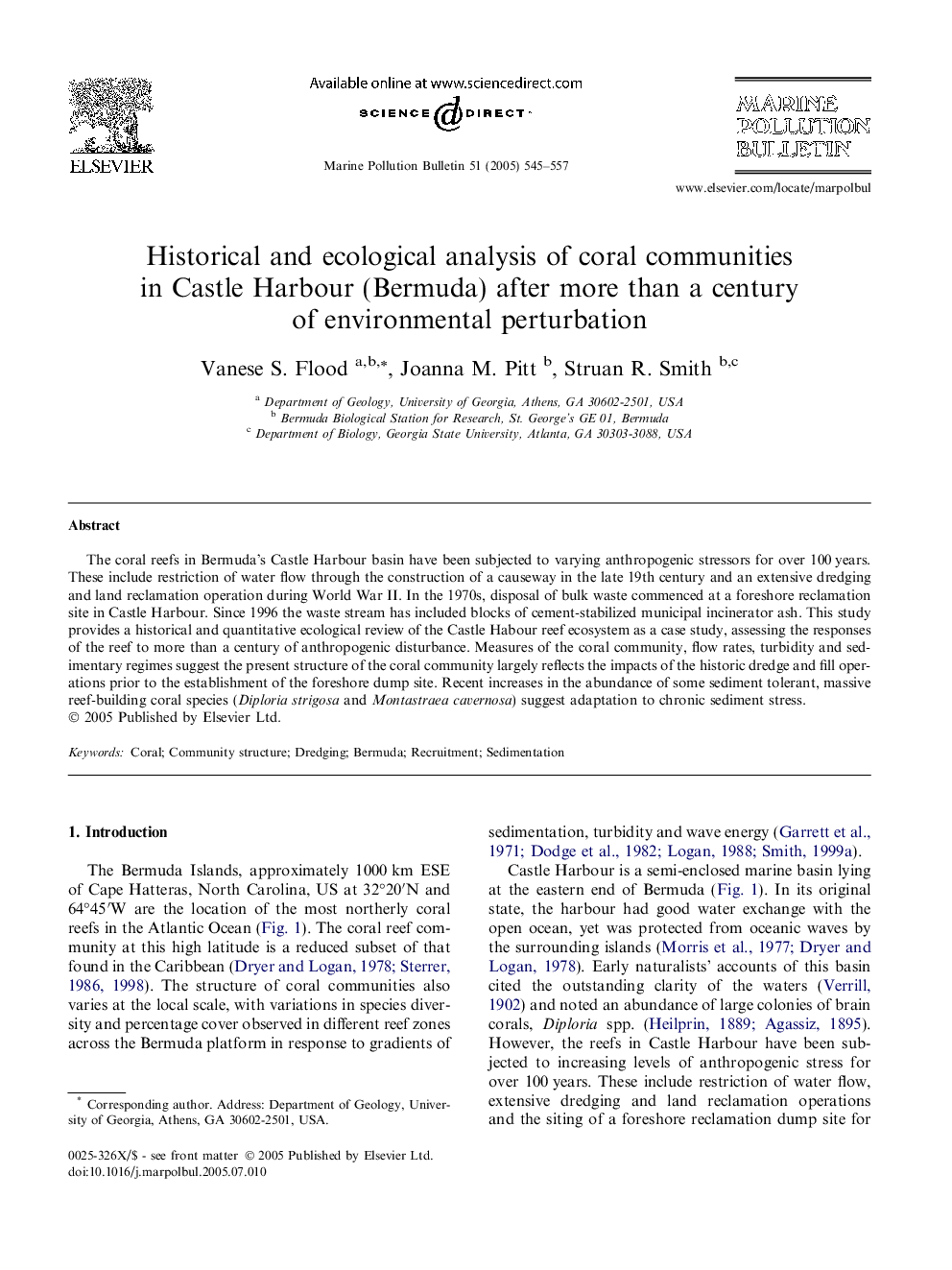| Article ID | Journal | Published Year | Pages | File Type |
|---|---|---|---|---|
| 9465755 | Marine Pollution Bulletin | 2005 | 13 Pages |
Abstract
The coral reefs in Bermuda's Castle Harbour basin have been subjected to varying anthropogenic stressors for over 100Â years. These include restriction of water flow through the construction of a causeway in the late 19th century and an extensive dredging and land reclamation operation during World War II. In the 1970s, disposal of bulk waste commenced at a foreshore reclamation site in Castle Harbour. Since 1996 the waste stream has included blocks of cement-stabilized municipal incinerator ash. This study provides a historical and quantitative ecological review of the Castle Habour reef ecosystem as a case study, assessing the responses of the reef to more than a century of anthropogenic disturbance. Measures of the coral community, flow rates, turbidity and sedimentary regimes suggest the present structure of the coral community largely reflects the impacts of the historic dredge and fill operations prior to the establishment of the foreshore dump site. Recent increases in the abundance of some sediment tolerant, massive reef-building coral species (Diploria strigosa and Montastraea cavernosa) suggest adaptation to chronic sediment stress.
Related Topics
Physical Sciences and Engineering
Earth and Planetary Sciences
Oceanography
Authors
Vanese S. Flood, Joanna M. Pitt, Struan R. Smith,
